If you’re a plant enthusiast like me, you might have heard about the stunning Monstera plant. Known for its iconic perforated leaves, the Monstera is undoubtedly one of the most sought-after houseplants in recent times. But have you ever wondered, “how long do Monstera plants live?”
Well, the answer is not as straightforward as you might think. Monstera plants can live for many years, but their lifespan is influenced by various factors. In this blog, we will dive deeper into the life expectancy of Monstera plants, and what you can do to ensure they thrive for as long as possible. So, let’s get started!
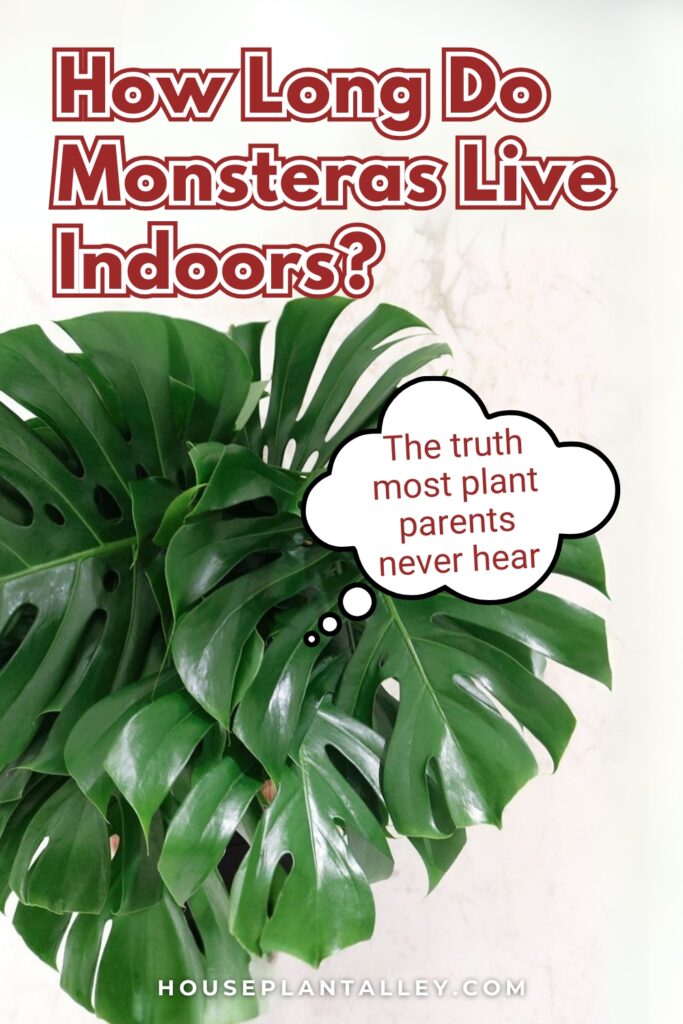
Contents
- 1 How Long Do Monstera Plants Live?
- 2 Can Monstera Plants Live Forever?
- 3 The Lifespan Of Monstera Plants Grown Indoors Vs. Outdoors
- 4 How Do I Tell How Old My Monstera Is?
- 5 How To Tell If A Monstera Is Dead Or Dormant
- 6 How To Make A Monstera Live Longer
- 7 How Long Can Monstera Live In Water?
- 8 How Long Do Monstera Deliciosa Leaves Last?
- 9 At What Age Do Monstera Leaves Split?
- 10 Should You Remove Old Monstera Leaves?
- 11 What Is The Life Cycle Of A Monstera?
- 12 Why Are My Monsteras New Leaves Dying?
- 13 Do Monstera Leaves Get Bigger With Age?
- 14 Do Monsteras Grow One Leaf At A Time?
- 15 How Hard Is It To Keep A Monstera Alive?
- 16 Conclusion
How Long Do Monstera Plants Live?
The Monstera, also known as the Swiss Cheese Plant, is a popular indoor plant with an impressive life expectancy. With proper care and maintenance, these plants can live for decades! They are one of the longest-living indoor plants out there—so if you’re looking for something to bring long-term vibrancy to your home or office space, consider investing in a Monstera.
Caring for this type of plant isn’t complicated either: make sure it gets enough light and water regularly (but not too much), and provide well-draining soil that has plenty of organic material mixed in. Then sit back and enjoy its beauty year after year! The time spent tending to your Monstera will be worth it as you witness its growth throughout the years.
Can Monstera Plants Live Forever?
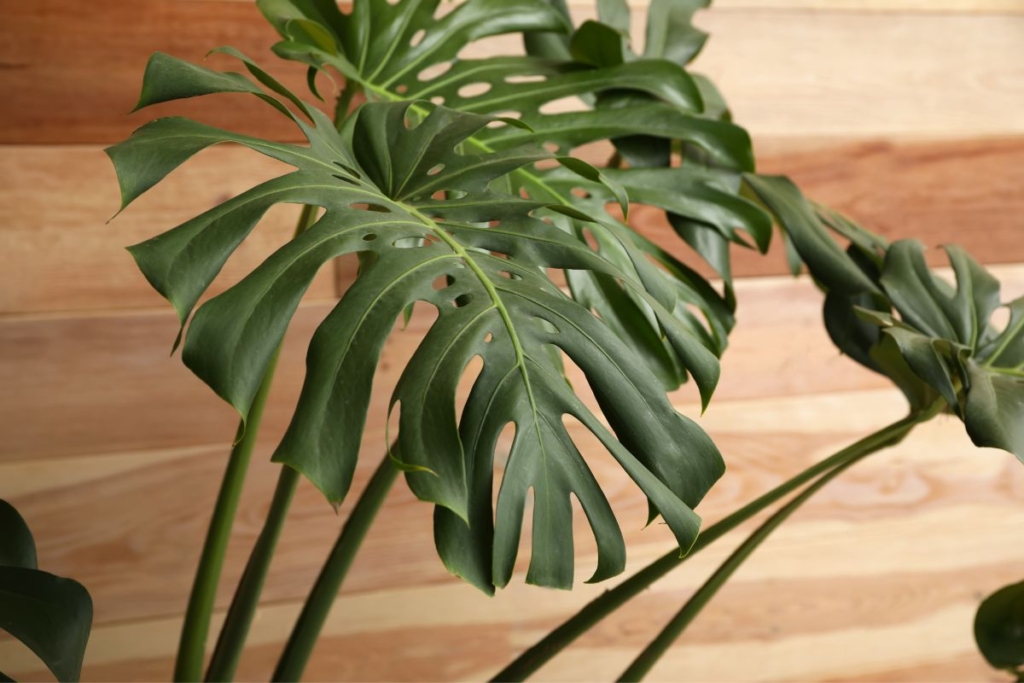
Can monstera plants live forever? Unfortunately, no. Although these houseplants may seem indestructible with their glossy leaves and long aerial roots, they have an average lifespan like any other plant. Here are some facts about the longevity of your beloved Monsteras:
- The average lifespan of a Monstera is around 10-15 years.
- However, this can vary depending on the conditions in which it’s kept—if you provide ample sunlight and water for your Monstera, its lengthy lifespan could be extended to up to 40 years!
- Keeping your Monstera healthy will ensure that it lives as long as possible; however, each individual plant has a different houseplant lifespan.
- If you want to keep your Monstera alive for longer than 15 years, make sure you provide proper care by keeping the soil moist but not soggy and ensuring plenty of indirect light.
- With good care, your Monstera can thrive happily in its natural environment or indoors!
Knowing how long your Monstera will last allows you to plan ahead when caring for them—giving them the best chance at living out their maximum life expectancy! While we all wish our lovable green companions had eternal life, understanding their typical lifespans gives us more insight into how to give them the best home possible.
The Lifespan Of Monstera Plants Grown Indoors Vs. Outdoors
When it comes to long-living perennial plants, monstera is a great choice. With proper care and the right environment—either indoors or outdoors—your monstera plant can bring you years of enjoyment. Let’s take a look at how indoor and outdoor conditions affect the longevity of monstera plants!
Indoor monstera plants generally have longer lifespans than their outdoor counterparts due to the more controlled environment that they are exposed to. Plant owners need to be sure that their indoor monstera has enough light, water, humidity, and temperature in order for it to thrive throughout its life cycle. On average, if properly cared for, an indoor monstera will live up to 15 years!
Outdoor monstera plants may not last as long because they’re exposed to environmental elements like extreme temperatures, pests and diseases that could shorten their lifespan. Generally speaking, with adequate care and attention from its owner, an outdoor monstera could live up to 10 years before needing replacing. It’s important to monitor your plant carefully and make sure it gets what it needs in order for it to reach its full potential.
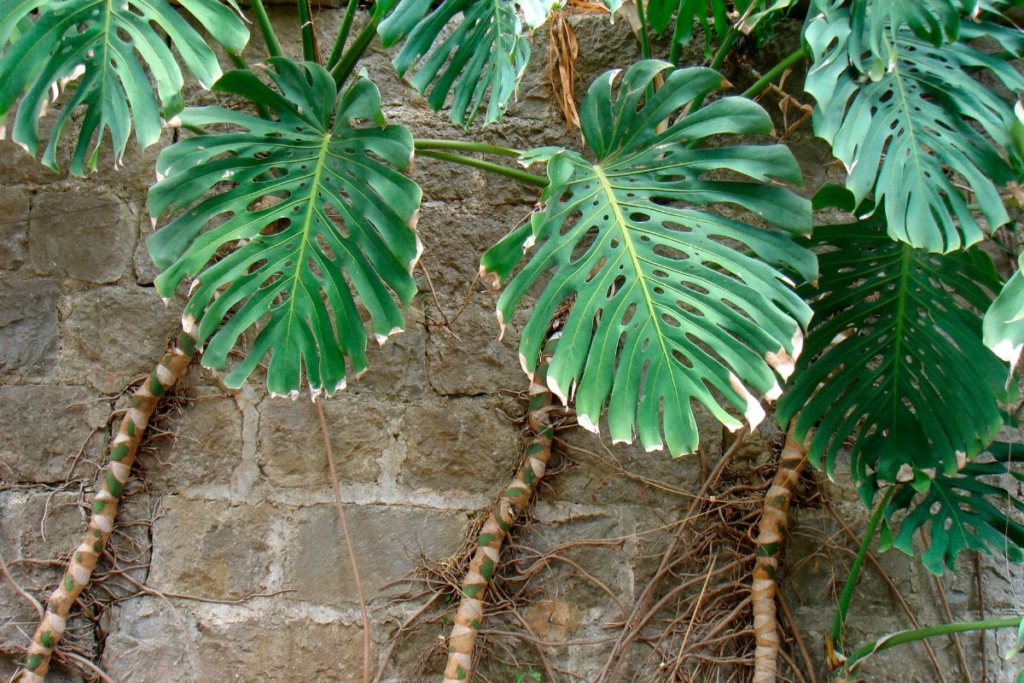
No matter where you choose to grow your monstera plant—indoors or outdoors—with good maintenance practices you can ensure that this lovely addition will grace your home for many seasons ahead!
How Do I Tell How Old My Monstera Is?
As a plant owner, you may be wondering how to tell the age of your monstera. It can be tricky to gauge the length of its lifespan as these plants live for quite some time! The secret lies in understanding where it has grown and what type of care it has received.
When grown indoors, your monstera could have a lengthy lifespan that ranges from 10-20 years if given proper care and nutrition with a fresh potting mix. You should look for signs such as browning leaves or yellowish stems that signify an older plant. If there are new growths at the base then this is typically indicative of a younger plant. Checking the roots is also helpful; healthy root systems indicate a young and vigorous plant while sparse ones suggest otherwise.

It’s important to note that when growing outdoors, monsteras tend to live much shorter lifespans due to various environmental factors like temperature changes and soil quality. Thus, it’s best practice to keep yours inside so you can enjoy its beautiful foliage and lush green leaves for many years to come!
How To Tell If A Monstera Is Dead Or Dormant
Figuring out if your Monstera plant is dead or dormant can be a tricky thing. Knowing the signs of root rot, indirect sunlight and temperature dips is important in determining whether your Monstera has met its end or just needs some TLC to come back to life!
Inspecting your Monstera for root rot is key. If you notice that the roots have dark spots, become mushy when touched, smell bad, or stick to each other, then it’s likely that they’ve been damaged beyond repair.
However, if there aren’t any obvious signs of root rot and the leaves appear wilted or droopy then this could be an indication that temperature dips may have caused your Monstera to go into dormancy. To revive it, keep it in a warm space during cold weather months. With time and care your Monstera will soon recover and live on for many years!
How To Make A Monstera Live Longer
If you want your monstera plant to live a long and healthy life, there are some steps that can be taken. Firstly, it’s important to understand the suitable conditions for these plants—they need plenty of bright, indirect light and humidity levels over 60%. Furthermore, use potting mixes with good drainage and make sure that the aerial roots have something to adhere to, like moss poles or stakes.
The key is in providing a warm environment where the soil remains moist but not soggy. Do this by watering regularly (but don’t overwater) and misting during dry periods. Fertilize twice a year in spring and summer using a balanced fertilizer solution diluted to half strength. Lastly, remember to repot every two years into fresh potting mix so that your monstera has all the nutrients it needs to thrive! With these tips in mind, you can look forward to many more years of enjoying your beautiful monstera plant.
How Long Can Monstera Live In Water?
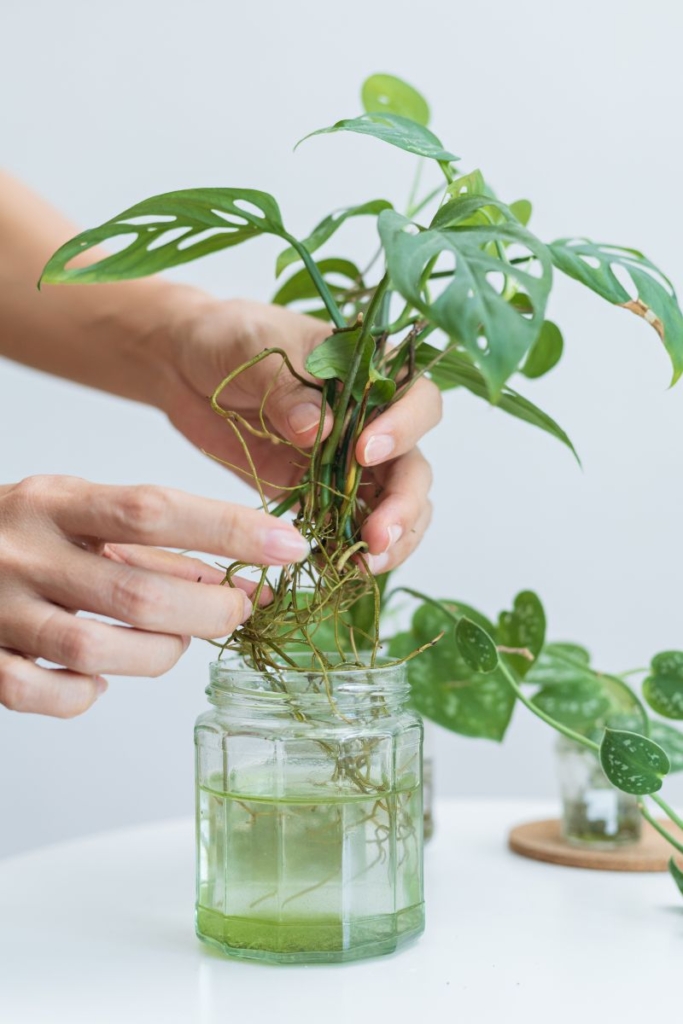
Monstera plants are known for their adaptability and ability to grow in various conditions, including water. However, while it is possible to grow Monstera plants in water, it is not the ideal environment for them, and they may not live as long as they would in soil.
In general, Monstera plants can live in water for a few weeks to a few months, depending on several factors, including the quality of the water, the temperature, and the size of the plant. If you want to grow your Monstera plant in water, it’s essential to make sure that the water is clean and free of contaminants. You can also add plant food or fertilizer to the water to provide your Monstera with the nutrients it needs to thrive.
However, even with the right conditions, Monstera plants grown in water are more susceptible to root rot, which can quickly kill the plant. Root rot occurs when the roots of the plant are consistently submerged in water, leading to fungal growth that can damage and kill the roots. As a result, it’s crucial to monitor your Monstera plant closely and make sure that the water is not stagnant and that the plant is not overwatered.
How Long Do Monstera Deliciosa Leaves Last?
While the lifespan of the leaves can vary depending on several factors, in general, Monstera deliciosa leaves can last for several years before they begin to decline.
The lifespan of a Monstera deliciosa leaf can be affected by several factors, including the plant’s age, overall health, and growing conditions. Younger plants with newer leaves may have longer-lasting leaves than older plants, which may produce smaller or less vibrant leaves over time. Additionally, the health of the plant can impact the lifespan of its leaves. A healthy plant with proper nutrition, hydration, and lighting is more likely to produce long-lasting, vibrant leaves than a plant that is struggling.
Finally, growing conditions can also play a role in the lifespan of Monstera deliciosa leaves. Plants that are exposed to direct sunlight or are located near drafty windows or doors may experience faster leaf decline. Similarly, plants that are overwatered or underwatered may also experience leaf problems, as they struggle to absorb nutrients and moisture from the soil.
In general, Monstera deliciosa leaves can last anywhere from one to three years, depending on the plant’s age, health, and growing conditions. However, with proper care and attention, you can help your Monstera deliciosa produce long-lasting, vibrant leaves that will enhance the beauty of your home for years to come.
At What Age Do Monstera Leaves Split?
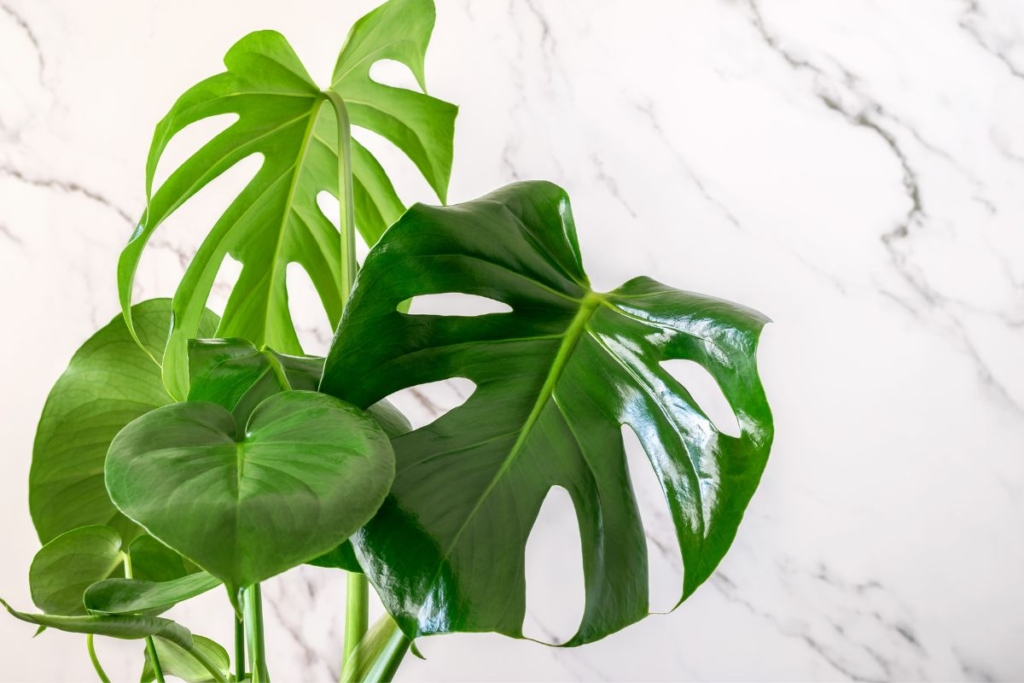
Have you ever wondered when the characteristic Monstera leaf will appear on your plant? Fenestrations, or those unique holes in a mature leaf’s surface, are an iconic feature of this popular houseplant. But what age does it take for that juvenile leaf to gain its signature look? Let’s explore!
First off, monstera leaves don’t split until they reach maturity—usually around 2-3 years old. In order to get fenestrated leaves as quickly as possible:
- Make sure your Monstera has plenty of light and warmth;
- Keep soil moist but not waterlogged;
- Fertilize monthly with an organic fertilizer during the growing season; and
- Prune away yellowing or dead leaves regularly.
By keeping these tips in mind, you’ll be able to encourage healthy growth so your Monstera reaches maturity faster and gains beautiful leaf fenestrations more quickly. Achieving full maturity doesn’t happen overnight—patience is key here! With proper care and attention though, you’ll soon have a lush green Monstera with all the classic characteristics we know and love.
Should You Remove Old Monstera Leaves?
When it comes to taking care of a monstera plant, one important question is whether you should remove old leaves. As your monstera grows and ages, it will naturally shed some of its older, yellowing leaves. While this process helps the plant maintain a healthy life cycle, there may be times when removing the dead or dying foliage can help promote new growth.
Plant care experts suggest that if you notice any brown spots on the underside of the leaf or darkening on the edges, it’s time to cut off these old monstera leaves so they won’t spread disease throughout the rest of your houseplant. Additionally, as long as you are careful not to damage the stem while cutting away dead leaves, removing them could also give your monstera more energy for creating new foliage and growing strong roots.
While pruning isn’t always necessary for healthy plants, carefully assessing each individual leaf—and making sure to remove only those that are clearly past their prime—can help ensure your monstera enjoys a vibrant and fruitful life!
What Is The Life Cycle Of A Monstera?
Have you ever wondered what the life cycle of a Monstera is? Well, these impressive plants have quite an impressive lifespan. They can live for up to 40 years in their natural environment! These plants go through different stages of growth as they age, making it important to understand the progression so that you can provide them with proper care throughout their life cycle.
As a young plant, monsteras tend to grow slowly and may not reach even 2 feet tall in the first couple of years. As they mature, the leaves get bigger and more dramatic-looking until eventually becoming huge monstera fronds measuring over 3 feet long! During this period of maturity, your monstera will be at its most productive stage and will require consistent pruning and guidance to ensure optimal health.
Further along in their life cycle, Monsteras become more top-heavy as new foliage becomes less frequent but larger in size. Eventually, after around 30 or 40 years depending on environmental conditions, your beautiful monstera will likely die off naturally due to old age.
Monstera’s lifespans are truly remarkable—if given enough time and space plus ample light and water, you could potentially witness several growth stages from start to finish! With careful tending during each stage of development, you’ll be sure to keep your Monstera alive and thriving for decades to come.
Why Are My Monsteras New Leaves Dying?
If your Monstera plant’s new leaves are dying off, there could be several reasons why this is happening. One of the most common culprits is excess moisture. Too much water or humidity in the air around your Monstera plant can cause new leaves to droop and die off before they have a chance to fully mature. Additionally, if your Monstera is not getting enough light, this can also cause new leaves to turn yellow and die off.
Another potential cause of dying Monstera leaves is pests or diseases. Spider mites, mealybugs, and other common plant pests can cause damage to the leaves and lead to their eventual death. Fungal or bacterial infections can also cause leaves to turn brown or yellow and die off.
To address the issue of dying Monstera leaves, it’s important to first identify the underlying cause. If the issue is related to excess moisture, adjust your watering schedule and ensure proper drainage to prevent overwatering. But if your plant is not getting enough light, consider moving it to a brighter location or supplementing it with artificial light.
If pests or diseases are the cause of the problem, take steps to address these issues promptly. This may involve using insecticidal soap or other treatments to eliminate pests, or pruning away infected leaves and treating them with a fungicide if the issue is related to the disease.
Do Monstera Leaves Get Bigger With Age?
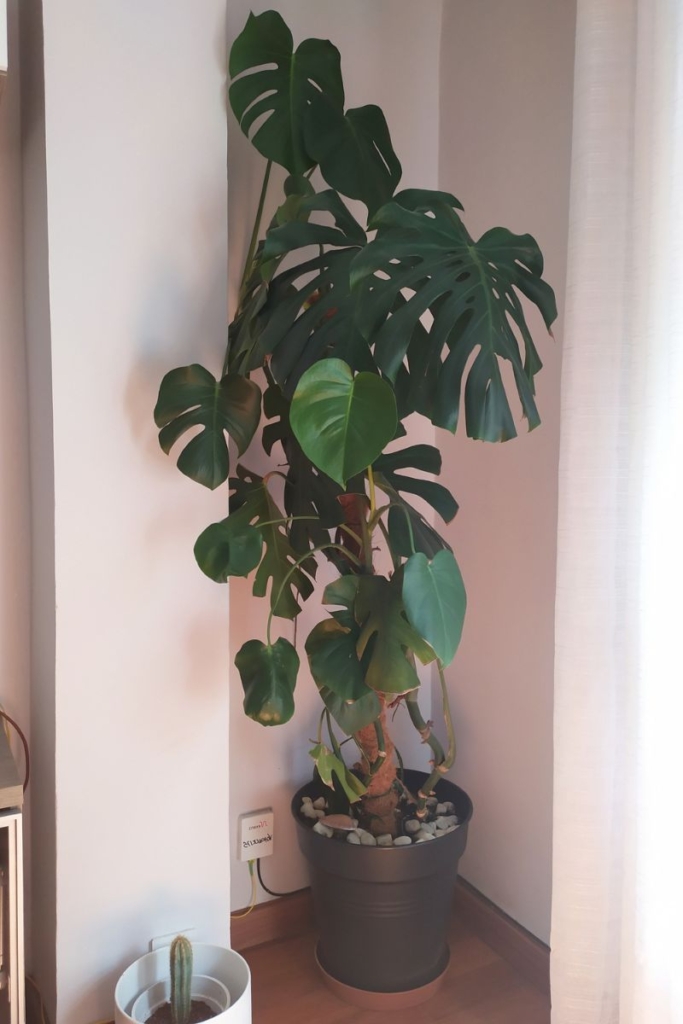
Have you ever noticed that mature monstera plants have larger leaves? If so, it’s no coincidence—the size of a monstera’s leaf increases with age. The length of time in which this occurs varies according to individual species, but generally speaking, if you give your plant enough care and attention, its leaves will grow bigger over time.
Do Monsteras Grow One Leaf At A Time?
Monstera plants do indeed grow one leaf at a time, rather than in clusters. As the plant grows, it will produce a new leaf from a single stem, rather than a group of stems.
The rate of leaf growth can vary depending on factors such as the plant’s age, the amount of light it receives, and the quality of soil and nutrients available. It’s not uncommon for Monstera leaves to take several days or even weeks to fully mature and unfurl.
If you’re concerned about the rate of leaf growth on your Monstera plant, it’s important to ensure that it’s getting enough light and nutrients to support healthy growth. Additionally, make sure that you’re not overwatering or underwatering the plant, as this can also impact leaf growth.
How Hard Is It To Keep A Monstera Alive?
Keeping a Monstera alive is not as daunting as it may seem. With the proper care and attention, you can keep your Monstera thriving for many years. Let’s explore how to successfully grow these beautiful plants up to 10 feet tall!
To ensure that your plant grows happily and healthily, there are several important elements to consider:
- Conditions – Keep an eye on the temperature indoors; ideally between 65-85 degrees Fahrenheit with high humidity levels.
- Nutrients – Supplement your Monstera’s soil with fertilizer twice per month during the growing season.
- Watering – Make sure to water deeply but infrequently—about once every 7-14 days depending on the temperature of your home—so that the soil is moist throughout but never soggy or dry.
Growing a Monstera doesn’t have to be hard work if you know what you’re doing! If you provide all these necessary conditions in one place, then you will soon witness its beauty fill up any room with life and create a stunning aesthetic inside your home.
Conclusion
In conclusion, Monstera plants can live for a long time if given the right growing conditions. In fact, with proper care and attention, they can even outlive their owners! While it is not possible to determine precisely how old your Monstera plant is without specific knowledge of its history, there are ways to estimate its age based on leaf size. Additionally, understanding the life cycle of a Monstera will help you identify when the leaves start dying off and when new ones grow in. Ultimately, knowing how long Monsteras live comes down to providing them with an environment that meets their needs so they can thrive for years to come.
